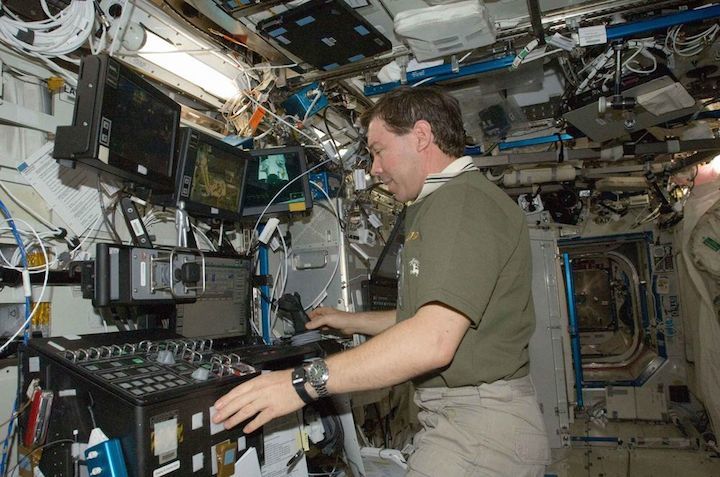12.08.2017
Robots Are Cutting Down on the Need for Space Doctors

Astronaut Michael Barratt works the controls at the Canadarm2 robotic workstation in the Destiny laboratory of the International Space Station.
-NASA has largely computerized routine tasks such as orbital rendezvous, docking, and trajectory mapping; it’s also been developing “robonauts” since the late 1990s, including medical systems that can perform tests and procedures while controlled remotely by a doctor—or, in some cases, handle things without any human involvement.
The Benefit
Automation has made working and traveling in space less dangerous and reduced the number of personnel needed on a typical mission.
Innovator
- Michael Barratt
- Age: 58
- NASA astronaut and flight surgeon
- Location: Camas, Wash.
Background
Barratt helped write the book on how to handle medical problems in space. He also played a role in bringing NASA’s space medicine program to the Shuttle-Mir project and the International Space Station.
Close Call
In 2009, when Barratt was flying a mission to the ISS, his craft’s automated docking system failed, requiring manual override. “Any time you have a machine, you count on it breaking in spaceflight,” he says.
Tasks
NASA doctors are using telemedicine and remote controls to treat motion sickness and minor trauma in space. Barratt says he also monitors crew members’ levels of stress and other possible psychological issues. “We don’t use robot systems to judge human anxiety,” he says, alluding to the murderous HAL operating system from Stanley Kubrick’s 2001: A Space Odyssey.
Safeguards
Even though much of the drudgery of space travel has been automated, astronauts are trained to expect malfunctions. Humans still hand-check calculations for trajectory and motion-control guidance, Barratt says: “Both humans and computers have glitches.”
The Verdict
Is there a point at which machines can do all space medicine? Not likely. But if space colonies become a reality, more robots will be needed. “Our mission is the expansion of civilization outward,” Barratt says. “To be a multiplanet species, as a survival mechanism, we see a blend of human and machine supporting those efforts. You need both.”
Quelle: Bloomberg
